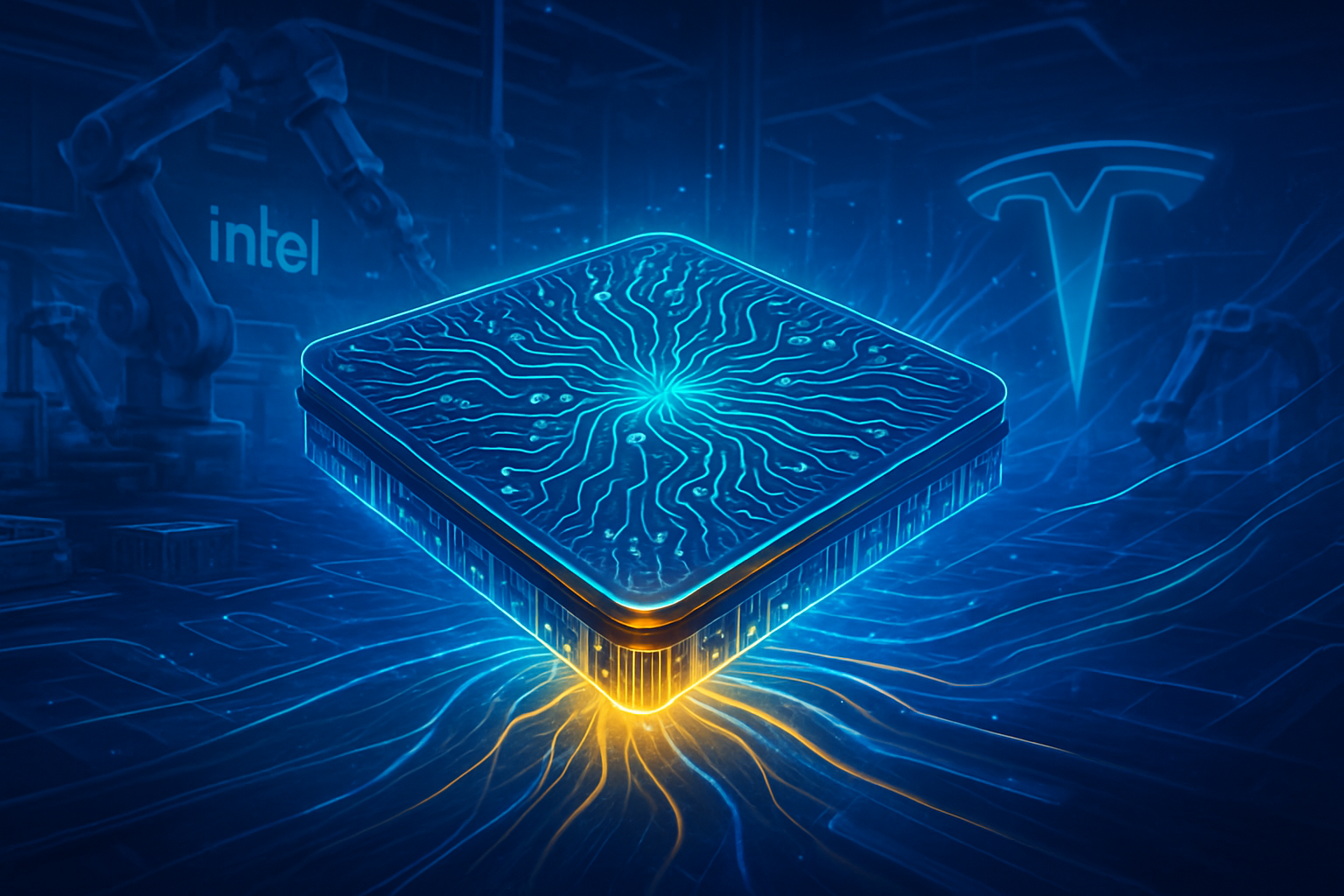Nvidia's (NASDAQ: NVDA) latest and most powerful Blackwell AI chips, unveiled in March 2024, are poised to revolutionize artificial intelligence computing. However, their global rollout has been immediately overshadowed by stringent U.S. export restrictions, preventing their sale to China. This decision, reinforced by Nvidia CEO Jensen Huang's recent confirmation of no plans to ship Blackwell chips to China, underscores the escalating geopolitical tensions and their profound impact on the AI chip supply chain and the future of AI development worldwide. This development marks a pivotal moment, forcing a global recalibration of strategies for AI innovation and deployment.
Unprecedented Power Meets Geopolitical Reality: The Blackwell Architecture
Nvidia's Blackwell AI chip architecture, comprising the B100, B200, and the multi-chip GB200 Superchip and NVL72 system, represents a significant leap forward in AI and accelerated computing, pushing beyond the capabilities of the preceding Hopper architecture (H100). Announced at GTC 2024 and named after mathematician David Blackwell, the architecture is specifically engineered to handle the massive demands of generative AI and large language models (LLMs).
Blackwell GPUs, such as the B200, boast a staggering 208 billion transistors, more than 2.5 times the 80 billion in Hopper H100 GPUs. This massive increase in density is achieved through a dual-die design, where two reticle-sized dies are integrated into a single, unified GPU, connected by a 10 TB/s chip-to-chip interconnect (NV-HBI). Manufactured using a custom-built TSMC 4NP process, Blackwell chips offer unparalleled performance. The B200, for instance, delivers up to 20 petaFLOPS (PFLOPS) of FP4 AI compute, approximately 10 PFLOPS for FP8/FP6 Tensor Core operations, and roughly 5 PFLOPS for FP16/BF16. This is a substantial jump from the H100's maximum of 4 petaFLOPS of FP8 AI compute, translating to up to 4.5 times faster training and 15 times faster inference for trillion-parameter LLMs. Each B200 GPU is equipped with 192GB of HBM3e memory, providing a memory bandwidth of up to 8 TB/s, a significant increase over the H100's 80GB HBM3 with 3.35 TB/s bandwidth.
A cornerstone of Blackwell's advancement is its second-generation Transformer Engine, which introduces native support for 4-bit floating point (FP4) AI, along with new Open Compute Project (OCP) community-defined MXFP6 and MXFP4 microscaling formats. This doubles the performance and size of next-generation models that memory can support while maintaining high accuracy. Furthermore, Blackwell introduces a fifth-generation NVLink, significantly boosting data transfer with 1.8 TB/s of bidirectional bandwidth per GPU, double that of Hopper's NVLink 4, and enabling model parallelism across up to 576 GPUs. Beyond raw power, Blackwell also offers up to 25 times lower energy per inference, addressing the growing energy consumption challenges of large-scale LLMs, and includes Nvidia Confidential Computing for hardware-based security.
Initial reactions from the AI research community and industry experts have been overwhelmingly positive, characterized by immense excitement and record-breaking demand. CEOs from major tech companies like Google (NASDAQ: GOOGL), Meta (NASDAQ: META), Microsoft (NASDAQ: MSFT), OpenAI, and Oracle (NYSE: ORCL) have publicly endorsed Blackwell's capabilities, with demand described as "insane" and orders reportedly sold out for the next 12 months. Experts view Blackwell as a revolutionary leap, indispensable for advancing generative AI and enabling the training and inference of trillion-parameter LLMs with ease. However, this enthusiasm is tempered by the geopolitical reality that these groundbreaking chips will not be made available to China, a significant market for AI hardware.
A Divided Market: Impact on AI Companies and Tech Giants
The U.S. export restrictions on Nvidia's Blackwell AI chips have created a bifurcated global AI ecosystem, significantly reshaping the competitive landscape for AI companies, tech giants, and startups worldwide.
Nvidia, outside of China, stands to solidify its dominance in the high-end AI market. The immense global demand from hyperscalers like Microsoft, Amazon (NASDAQ: AMZN), Google, and Meta ensures strong revenue growth, with projections of exceeding $200 billion in revenue from Blackwell this year and potentially reaching a $5 trillion market capitalization. However, Nvidia faces a substantial loss of market share and revenue opportunities in China, a market that accounted for 17% of its revenue in fiscal 2025. CEO Jensen Huang has confirmed the company currently holds "zero share in China's highly competitive market for data center compute" for advanced AI chips, down from 95% in 2022. The company is reportedly redesigning chips like the B30A in hopes of meeting future U.S. export conditions, but approval remains uncertain.
U.S. tech giants such as Google, Microsoft, Meta, and Amazon are early adopters of Blackwell, integrating them into their AI infrastructure to power advanced applications and data centers. Blackwell chips enable them to train larger, more complex AI models more quickly and efficiently, enhancing their AI capabilities and product offerings. These companies are also actively developing custom AI chips (e.g., Google's TPUs, Amazon's Trainium/Inferentia, Meta's MTIA, Microsoft's Maia) to reduce dependence on Nvidia, optimize performance, and control their AI infrastructure. While benefiting from access to cutting-edge hardware, initial deployments of Blackwell GB200 racks have reportedly faced issues like overheating and connectivity problems, leading some major customers to delay orders or opt for older Hopper chips while waiting for revised versions.
For other non-Chinese chipmakers like Advanced Micro Devices (NASDAQ: AMD), Intel (NASDAQ: INTC), Broadcom (NASDAQ: AVGO), and Cerebras Systems, the restrictions create a vacuum in the Chinese market, offering opportunities to step in with compliant alternatives. AMD, with its Instinct MI300X series, and Intel, with its Gaudi accelerators, offer a unique approach for large-scale AI training. The overall high-performance AI chip market is experiencing explosive growth, projected to reach $150 billion in 2025.
Conversely, Chinese tech giants like Alibaba (NYSE: BABA), Baidu (NASDAQ: BIDU), and Tencent (HKG: 0700) face significant hurdles. The U.S. export restrictions severely limit their access to cutting-edge AI hardware, potentially slowing their AI development and global competitiveness. Alibaba, for instance, canceled a planned spin-off of its cloud computing unit due to uncertainties caused by the restrictions. In response, these companies are vigorously developing and integrating their own in-house AI chips. Huawei, with its Ascend AI processors, is seeing increased demand from Chinese state-owned telecoms. While Chinese domestic chips still lag behind Nvidia's products in performance and software ecosystem support, the performance gap is closing for certain tasks, and China's strategy focuses on making domestic chips economically competitive through generous energy subsidies.
A Geopolitical Chessboard: Wider Significance and Global Implications
The introduction of Nvidia's Blackwell AI chips, juxtaposed with the stringent U.S. export restrictions preventing their sale to China, marks a profound inflection point in the broader AI landscape. This situation is not merely a commercial challenge but a full-blown geopolitical chessboard, intensifying the tech rivalry between the two superpowers and fundamentally reshaping the future of AI innovation and deployment.
Blackwell's capabilities are integral to the current "AI super cycle," driving unprecedented advancements in generative AI, large language models, and scientific computing. Nations and companies with access to these chips are poised to accelerate breakthroughs in these fields, with Nvidia's "one-year rhythm" for new chip releases aiming to maintain this performance lead. However, the U.S. government's tightening grip on advanced AI chip exports, citing national security concerns to prevent their use for military applications and human rights abuses, has transformed the global AI race. The ban on Blackwell, following earlier restrictions on chips like the A100 and H100 (and their toned-down variants like A800 and H800), underscores a strategic pivot where technological dominance is inextricably linked to national security. The Biden administration's "Framework for Artificial Intelligence Diffusion" further solidifies this tiered system for global AI-relevant semiconductor trade, with China facing the most stringent limitations.
China's response has been equally assertive, accelerating its aggressive push toward technological self-sufficiency. Beijing has mandated that all new state-funded data center projects must exclusively use domestically produced AI chips, even requiring projects less than 30% complete to remove foreign chips or cancel orders. This directive, coupled with significant energy subsidies for data centers using domestic chips, is one of China's most aggressive steps toward AI chip independence. This dynamic is fostering a bifurcated global AI ecosystem, where advanced capabilities are concentrated in certain regions, and restricted access prevails in others. This "dual-core structure" risks undermining international research and regulatory cooperation, forcing development practitioners to choose sides, and potentially leading to an "AI Cold War."
The economic implications are substantial. While the U.S. aims to maintain its technological advantage, overly stringent controls could impair the global competitiveness of U.S. chipmakers by shrinking global market share and incentivizing China to develop its own products entirely free of U.S. technology. Nvidia's market share in China's AI chip segment has reportedly collapsed, yet the insatiable demand for AI chips outside China means Nvidia's Blackwell production is largely sold out. This period is often compared to an "AI Sputnik moment," evoking Cold War anxiety about falling behind. Unlike previous tech milestones, where innovation was primarily merit-based, access to compute and algorithms now increasingly depends on geopolitical alignment, signifying that infrastructure is no longer neutral but ideological.
The Horizon: Future Developments and Enduring Challenges
The future of AI chip technology and market dynamics will be profoundly shaped by the continued evolution of Nvidia's Blackwell chips and the enduring impact of China export restrictions.
In the near term (late 2024 – 2025), the first Blackwell chip, the GB200, is expected to ship, with consumer-focused RTX 50-series GPUs anticipated to launch in early 2025. Nvidia also unveiled Blackwell Ultra in March 2025, featuring enhanced systems like the GB300 NVL72 and HGX B300 NVL16, designed to further boost AI reasoning and HPC. Benchmarks consistently show Blackwell GPUs outperforming Hopper-class GPUs by factors of four to thirty for various LLM workloads, underscoring their immediate impact. Long-term (beyond 2025), Nvidia's roadmap includes a successor to Blackwell, codenamed "Rubin," indicating a continuous two-year cycle of major architectural updates that will push boundaries in transistor density, memory bandwidth, and specialized cores. Deeper integration with HPC and quantum computing, alongside relentless focus on energy efficiency, will also define future chip generations.
The U.S. export restrictions will continue to dictate Nvidia's strategy for the Chinese market. While Nvidia previously designed "downgraded" chips (like the H20 and reportedly the B30A) to comply, even these variants face intense scrutiny. The U.S. government is expected to maintain and potentially tighten restrictions, ensuring its most advanced chips are reserved for domestic use. China, in turn, will double down on its domestic chip mandate and continue offering significant subsidies to boost its homegrown semiconductor industry. While Chinese-made chips currently lag in performance and energy efficiency, the performance gap is slowly closing for certain tasks, fostering a distinct and self-sufficient Chinese AI ecosystem.
The broader AI chip market is projected for substantial growth, from approximately $52.92 billion in 2024 to potentially over $200 billion by 2030, driven by the rapid adoption of AI and increasing investment in semiconductors. Nvidia will likely maintain its dominance in high-end AI outside China, but competition from AMD's Instinct MI300X series, Intel's Gaudi accelerators, and hyperscalers' custom ASICs (e.g., Google's Trillium) will intensify. These custom chips are expected to capture over 40% of the market share by 2030, as tech giants seek optimization and reduced reliance on external suppliers. Blackwell's enhanced capabilities will unlock more sophisticated applications in generative AI, agentic and physical AI, healthcare, finance, manufacturing, transportation, and edge AI, enabling more complex models and real-time decision-making.
However, significant challenges persist. The supply chain for advanced nodes and high-bandwidth memory (HBM) remains capital-intensive and supply-constrained, exacerbated by geopolitical risks and potential raw material shortages. The US-China tech war will continue to create a bifurcated global AI ecosystem, forcing companies to recalibrate strategies and potentially develop different products for different markets. Power consumption of large AI models and powerful chips remains a significant concern, pushing for greater energy efficiency. Experts predict a continued GPU dominance for training but a rising share for ASICs, coupled with expansion in edge AI and increased diversification and localization of chip manufacturing to mitigate supply chain risks.
A New Era of AI: The Long View
Nvidia's Blackwell AI chips represent a monumental technological achievement, driving the capabilities of AI to unprecedented heights. However, their story is inextricably linked to the U.S. export restrictions to China, which have fundamentally altered the landscape, transforming a technological race into a geopolitical one. This development marks an "irreversible bifurcation of the global AI ecosystem," where access to cutting-edge compute is increasingly a matter of national policy rather than purely commercial availability.
The significance of this moment in AI history cannot be overstated. It underscores a strategic shift where national security and technological leadership take precedence over free trade, turning semiconductors into critical strategic resources. While Nvidia faces immediate revenue losses from the Chinese market, its innovation leadership and strong demand from other global players ensure its continued dominance in the AI hardware sector. For China, the ban accelerates its aggressive pursuit of technological self-sufficiency, fostering a distinct domestic AI chip industry that will inevitably reshape global supply chains. The long-term impact will be a more fragmented global AI landscape, influencing innovation trajectories, research partnerships, and the competitive dynamics for decades to come.
In the coming weeks and months, several key areas will warrant close attention:
- Nvidia's Strategy for China: Observe any further attempts by Nvidia to develop and gain approval for less powerful, export-compliant chip variants for the Chinese market, and assess their market reception if approved. CEO Jensen Huang has expressed optimism about eventually returning to the Chinese market, but also stated it's "up to China" when they would like Nvidia products back.
- China's Indigenous AI Chip Progress: Monitor the pace and scale of advancements by Chinese semiconductor companies like Huawei in developing high-performance AI chips. The effectiveness and strictness of Beijing's mandate for domestic chip use in state-funded data centers will be crucial indicators of China's self-sufficiency efforts.
- Evolution of US Export Policy: Watch for any potential expansion of US export restrictions to cover older generations of AI chips or a tightening of existing controls, which could further impact the global AI supply chain.
- Global Supply Chain Realignment: Observe how international AI research partnerships and global supply chains continue to shift in response to this technological decoupling. This will include monitoring investment trends in AI infrastructure outside of China.
- Competitive Landscape: Keep an eye on Nvidia's competitors, such as AMD's anticipated MI450 series GPUs in 2026 and Broadcom's growing AI chip revenue, as well as the increasing trend of hyperscalers developing their own custom AI silicon. This intensified competition, coupled with geopolitical pressures, could further fragment the AI hardware market.
This content is intended for informational purposes only and represents analysis of current AI developments.
TokenRing AI delivers enterprise-grade solutions for multi-agent AI workflow orchestration, AI-powered development tools, and seamless remote collaboration platforms.
For more information, visit https://www.tokenring.ai/.








